The temperature is still routinely breaking 100° F in southern Arizona in September, so I'm always intrigued when we get an email like this one:
Hi Rich, My wife and I are headed to Rocky Mountain National Park next week and the forecast is for snow on one of our 4 days at the park and the nighttime lows are below freezing 3 out 4 of our nights. Do you think our 16’ Airstream will do ok in this unexpected cold? Any suggestions? Thank you. John
This might seem like a challenge to most folks, but to us desert dwellers it sounds great! A little overnight snow in September would be a treat.
First off, don't worry. You and your Airstream will be fine. All Airstreams are built for freezing temperatures, so a night in the 20s won't be any trouble at all—provided you take a few precautions.

1. Start with full batteries and propane tanks
The key to trouble-free cold-weather camping is to go prepared, with full propane tanks, and (if you're not going to a campsite with electricity) fully charged batteries and some method to recharge them, like solar panels.
You need lots of propane because you're going to need to run the furnace (I'll explain why further down). The furnace can really burn up a lot of propane when the temperatures are below freezing at night, and it's easy to go through a full tank in just a few days.
We usually set the nighttime temperature at 62° F. This is a balance between propane conservation and comfort. With a few blankets on the bed (or a warm partner, or a dog) it's very comfortable. Still, during an extended stay with nighttime lows around freezing, you'll want to know where propane refills can be found. Also keep in mind that on exceptionally cold or windy night the furnace will run a lot more than usual.
You also need a lot of electricity, because the furnace uses a surprising amount of power to run the blower. In a very cold night the furnace can cycle on and off every few minutes, consuming 25-40 DC amp-hours by breakfast. Add to that your normal daily electrical usage from things like an electric refrigerator, and you could be out of power in 24 hours.
2. Plug in if you can
Having an electric hookup is the best option by far. But if you're in a remote campground there may not be an option to plug in. This makes things very tough in the winter.
While I'm a fan of solar panels, in the winter the sun-gathering opportunity is much less due to low sun angle and cloudiness. Solar still works but it might not be enough if you aren't conserving power very carefully. In this case, a catalytic heater may be a good option to consider since it doesn't consume electricity.
Another option is to add more battery capacity. There are several ways to do this, and the best solution depends on the layout of your Airstream. Usually people find a spot toward the front of the trailer (such as under a couch or in an external storage compartment) to install a bigger battery bank. At the same time it’s an opportunity to upgrade to lithium-iron (LiFePO4) batteries, which will give you more power in the same amount of space.
Otherwise, a generator is probably going to be needed after a day or two of winter boondocking. It will work, but I'm not a big fan of generators for battery recharging, because they're very inefficient. You can read more about that here.
3. Run the furnace
The fresh water plumbing is all contained inside the body of the trailer, so it will be fine as long as there's heat inside. Basically, if you're comfortable, the plumbing is too. If it's really cold, you might leave the cabinet doors ajar to let warm air circulate inside.
The holding tanks, on the other hand, are below the floor, outside of the heated space. So, on most Airstreams the furnace has a little duct that spills some heated air down to the holding tanks to keep them from freezing. (On other Airstreams, there's an electric heating pad for the tanks.)
Sometimes people make the mistake of using a portable electric heater inside the Airstream, to save propane. The problem with this idea is that the holding tanks under the floor won't get warmed, and they could freeze in extreme weather. You should use a portable electric heater only when you're confident it's not cold enough to freeze the tanks.
If your Airstream came with an air conditioner that has a "heat pump" mode, you can use that on cool nights. It's not much use below 40° F, for two reasons:
- It outputs warm air from the ceiling, so the floor tends to be uncomfortably cold.
- It won't work when the temperature is below (or near) freezing.
In very cold weather, the furnace is your best friend.
4. Watch out for frozen hoses
If you have a water hookup and a typical vinyl hose, you should disconnect it at night and let it drain. Those hoses can fail if they are allowed to freeze. (If you have our Ultimate Water Hose you don't have to worry because it won't be harmed by freezing.)
In extreme temperatures, like close to zero, you may find the dump valves frozen in the morning. This is rare but if it happens you should not attempt to force them. Wait until temperatures rise before trying to move the valves, or you'll damage the seals and they'll leak.

5. Be very careful on winter roads!
The other thing I think about when going into a winter situation is whether there might be significant snow accumulation that makes driving difficult. Most of us don't have winter tires on our tow vehicles and many of us don't have four-wheel drive, so with the added weight of a trailer, getting stuck is a real risk. Even getting in and out of a slushy campground, like the one pictured above in Fort Collins CO can be tough. (Fortunately that vehicle had All-Wheel Drive.)
Towing down a mountain road with snow on the road is a formula for disaster if you aren't very careful. You'll want to be confident that your trailer brakes are dialed in so that they don't over-brake or under-brake, and in any case keep your speed down. When in doubt, wait it out. A couple of hours of sunshine can make a huge difference on the roads.
6. Take the right clothing and gear to enjoy winter activities
Most of my preparation for a winter camping trip is to bring gear that makes it fun. I like to do a little cooking with the Dutch Oven after dark, so I bring all that gear plus plenty of warm clothes for myself.
If you plan a trip to Rocky Mountain National Park hoping to spot some elk, or to state parks in southern Arizona for winter birdwatching, you'll definitely want to take a pair of good binoculars (or a long telephoto lens for your camera).
Your preferred activity might be hiking, skiing, mountain biking, shopping, etc. In that case, it's all about taking the right clothing so you can get out of the Airstream and enjoy your day in comfort. For example, a few weeks ago we purchased wool Stetson hats while passing through Marfa, TX. We're taking them to northern New Mexico later this week where expected lows are in the mid-40s.
Late-season and winter camping can be awesome, and your Airstream makes it possible. Don't fear the cold. Follow these preparation strategies and you'll have a great time.


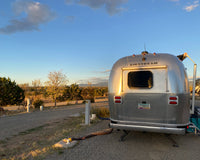
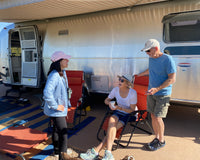
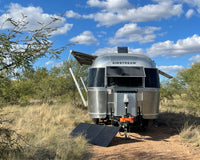
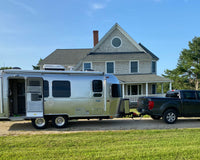
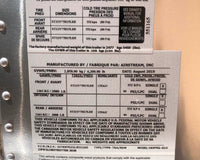
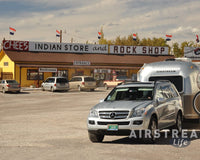

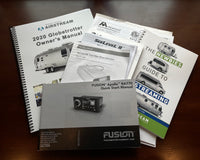
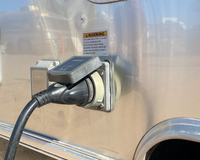
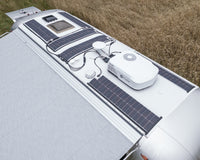
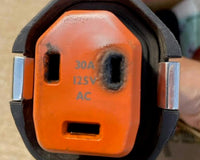



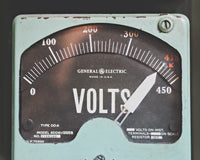

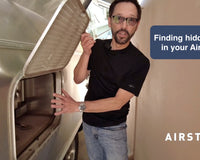
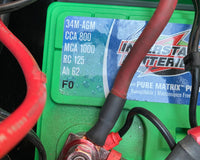
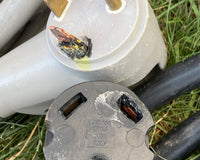
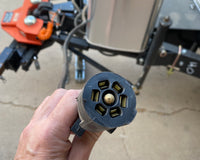
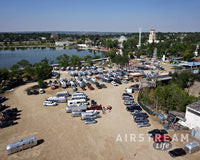
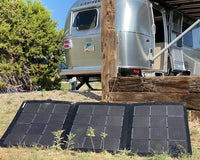
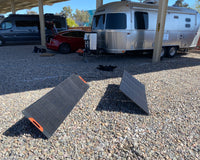
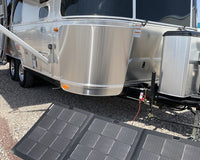
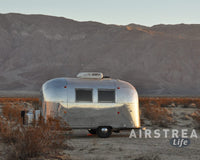
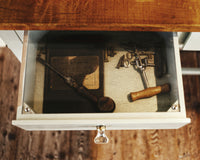
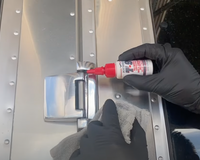
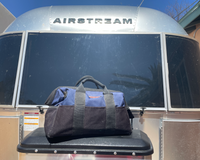
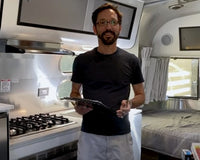
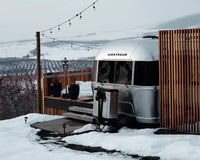
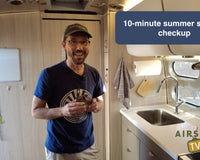
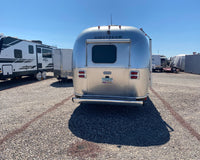
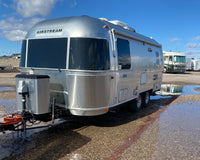
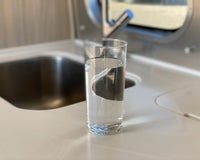

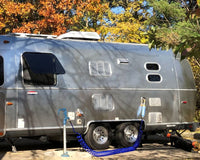
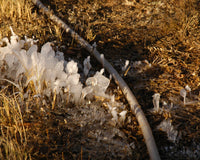
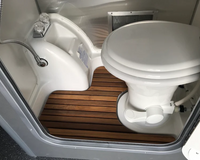

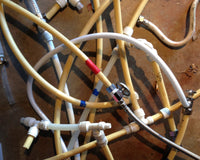
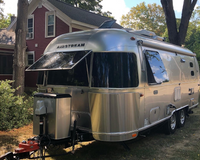
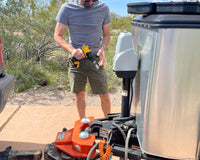
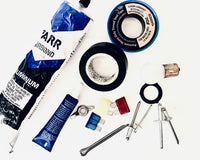
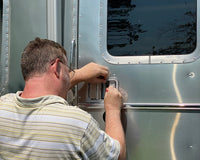
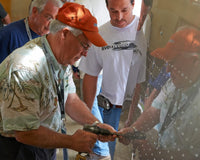
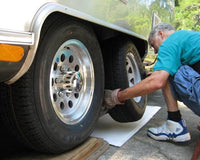
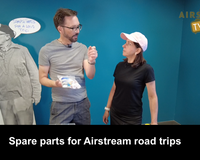
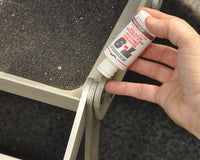
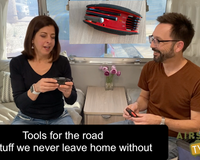
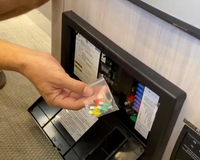

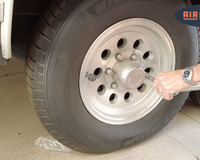
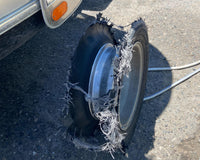
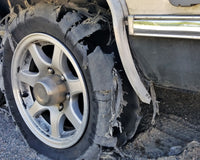

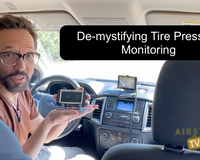
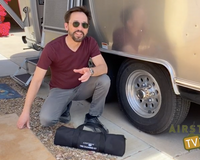

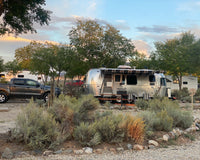
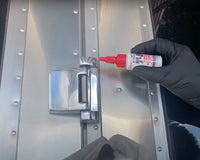

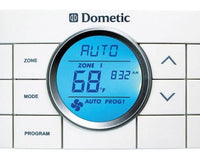
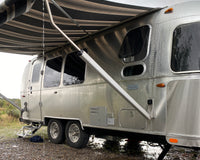
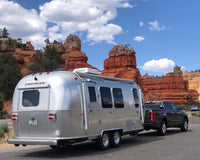
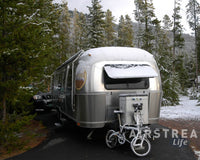
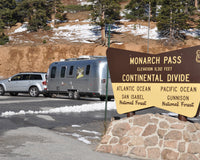
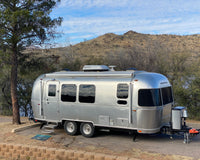
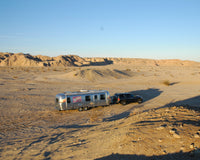
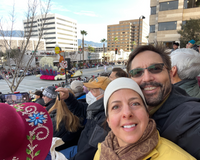

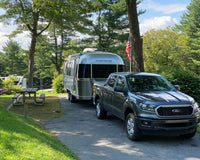
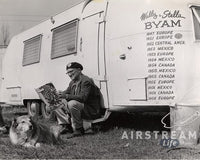
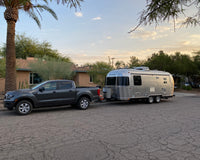
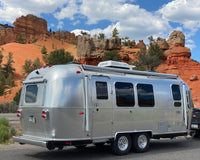
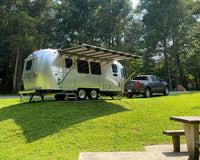
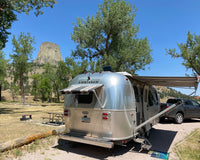
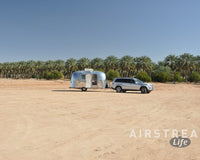
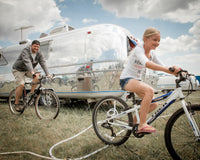
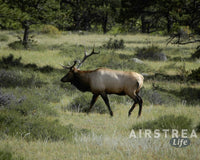
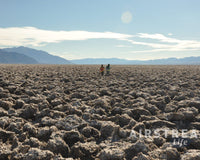
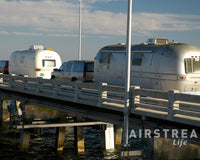
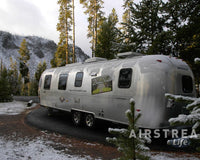
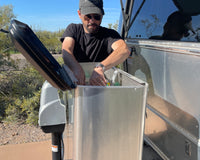
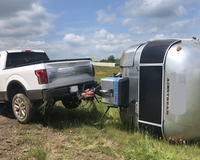
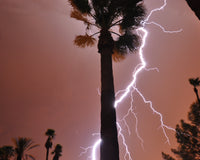
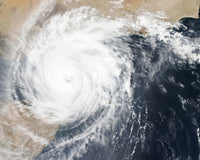
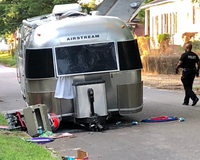
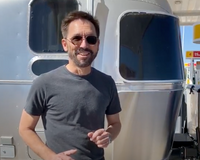
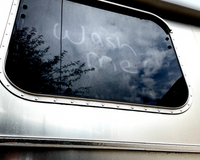
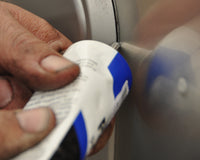
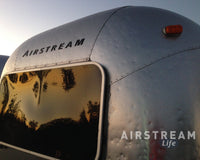
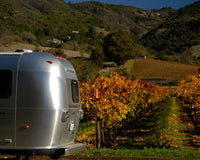
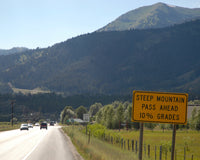
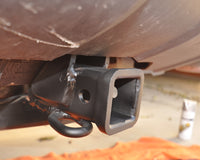
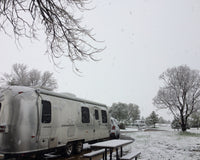
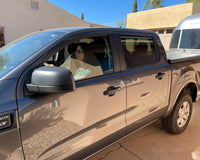
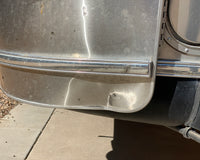
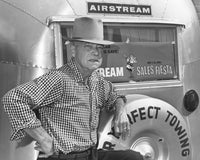
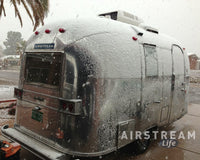
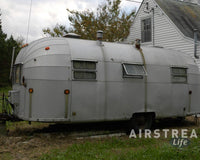
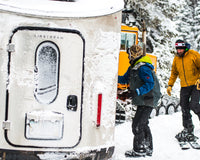
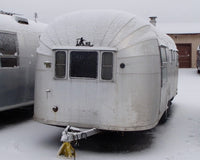
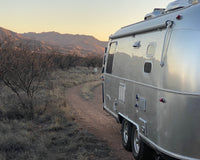
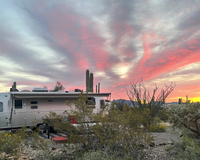
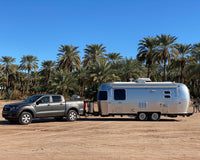
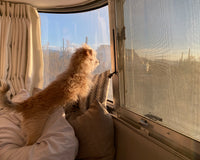
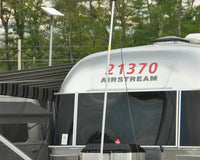
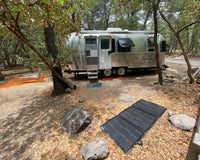
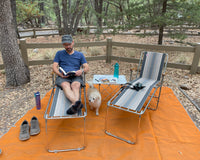
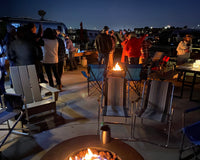
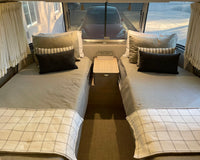
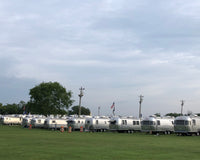
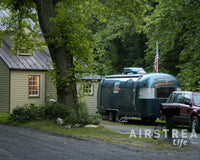
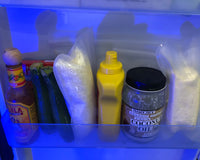
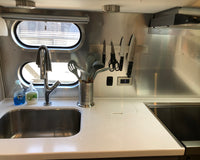
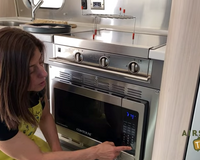
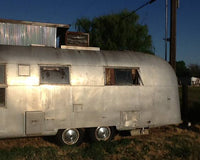
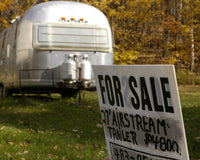
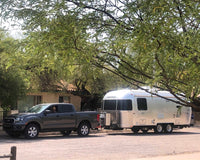
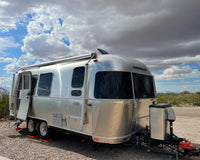
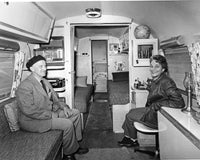
5 comments
Heidi McCormick
Question regarding the dump valves on our 2015 23FB international. You mention the we should not try to force them if frozen. But isn’t there a danger that the exposed portion of the black lines & valves could burst/crack due to freezing? I have read where others have wrapped electric heat tape around the exposed areas of the dump valves. But that heat tape requires electricity that you might not be available if you are boondocking. Should I not be concerned about freezing and breaking the exposed dump lines and valves?
Mark
You missed several important points!
1) Dehumidifier – this is vital since your coach will be buttoned up tight and you’ll be breathing, cooking with the propane stove and heating ~ all sources of moisture. Otherwise the walls will start dripping.
2) Insulating Window Coverage – Our single pane windows transfer a lot of cold. A simple roll of silver insulating window from any big box store can be easily cut down to cover all windows just by propping them in place behind curtains. During the day they’re easily removed. Don’t forget any skylights, too!
Mary Ann
What about adding anti-freeze chemicals in your black or gray tanks?
Randy Mathern
informative!
how about when you’re driving down the road and encounter cold temps… can you keep the trailer warm with gas furnace while driving??
Rich Luhr
Wow — lots of comments! Here are some quick answers:
Heidi and Mary Ann: The black and gray tank valves and pipes will not burst or crack due to freezing, for two reasons. (1) You’re constantly adding warm water to those tanks, as you use the Airstream. (2) Those pipes aren’t pressurized, so if ice does form, it has room to expand (back toward the tank). Usually the only problem is a stuck valve, and that will take care of itself if temps go above freezing during the day.
Mark: Dehumidifying is indeed important! But you don’t need a dehumidifier: it’s far easier and more effective to simply crack a roof vent and one window to allow a small amount of fresh air in.
Randy: Yes, you can try running the furnace during travel but it may not be enough to prevent a plumbing freeze — and there are other risks. You could kill the trailer batteries (the tow vehicle’s charge line may not be enough) and if you run out of propane you’re screwed.
I talked about these issues and others, in the video “7 Tips For Cold Weather Travel In An Airstream”, which you can find on our video page under “Tips and Tricks”.